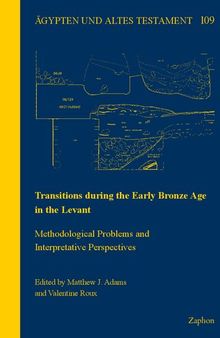 جزییات کتاب
جزییات کتاب
The present volume brings together 14 papers of a workshop organized by the W.F. Albright Institute of Archaeological Research and the Centre de recherche francais a Jerusalem. The objective of the workshop was to confront scholarly interpretations of the various transitional phases across the late 4th-3rd Millennium (Late Chalcolithic to Early Bronze I, EB I to EB II, and EB III to EB IV / Intermediate Bronze Age) in the southern Levant. The focus was on the nature of the cultural-period-defining traits and their value for distinguishing between changes related to endogenous or exogenous evolution, cultural or demic diffusion. These traits include material culture, architecture, mortuary practices as well as patterns of relationships between sites and subsistence strategies. - The traditional approach to structuring the past is based on a rigid chronological perception of time forced upon dynamic and fluidly transforming societies. The one-dimensional nature of the chronological approach results in periods of well-defined spatiotemporal cultural entities separated by "transitional" periods. These defined cultural entities are often treated as static, though we know they were not, so that we may interpret cultural, historical, sociological, and political aspects of the society. Transition periods, however, are often treated as outliers interpreted against one or both of the periods that bracket them.



 دانلود کتاب
دانلود کتاب

 جزییات کتاب
جزییات کتاب


 این کتاب رو مطالعه کردید؟ نظر شما چیست؟
این کتاب رو مطالعه کردید؟ نظر شما چیست؟
